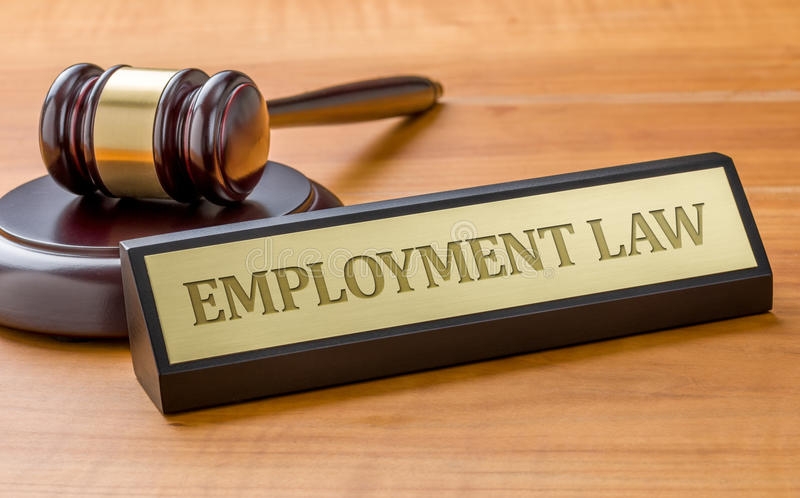Disciplinary Investigations | Essential Guidance for Employers
November 12, 2020 | By: Becky Edwards
 Getting disciplinary investigations correct from the beginning can really help ensure the whole disciplinary process runs more smoothly. When an employee has seemingly committed some “wrong doing” an employer could easily jump to a decision on exactly how they’re going to handle it, or want to dismiss them immediately.
Getting disciplinary investigations correct from the beginning can really help ensure the whole disciplinary process runs more smoothly. When an employee has seemingly committed some “wrong doing” an employer could easily jump to a decision on exactly how they’re going to handle it, or want to dismiss them immediately.
There are two reasons why this is a bad idea; firstly, even where you are convinced there is no way out for the employee (for example if you saw them assault a colleague) you still need to show you’ve followed a fair procedure otherwise you could find yourself defending a tribunal claim. Secondly, where the act sometimes seems clear cut from first sight, it isn’t always so and there can be things that crop up after you’ve made impulse decisions that you would not have expected. Part of ensuring a fair process is ensuring you have conducted a “reasonable investigation” and is one of the most important stages.
So how do you conduct a “reasonable investigation”?
- Speak to the employee in question and get their side of the story. Unless you’re obliged by your own policy, you don’t have to invite them in formally – sometimes it works better to catch them off guard as they haven’t got time to think of an excuse!
- When speaking to the employee, keep things confidential and professional. Take them into a private meeting room to discuss. They aren’t entitled to have anyone accompany them at this point (unless your policy gives them this right or there are special circumstances such as they have learning difficulties or difficulties communicating).
- Don’t prejudge – no matter what your opinion is or how clear cut you think things are. The investigation stage is not for making final decisions so you must act impartially or appoint someone who can.
- Try where possible to ensure the person investigating hasn’t had involvement in the matters being addressed. Ensure you are leaving availability for someone different to hold the later stages of the process such as the disciplinary and any appeal, where your organisational set up allows this. Sometimes, appointing a third party outside of the organisation may be reasonable.
- Hold investigation meetings or obtain witness statements with anyone who may have been involved or be able to assist with information.
- Check out other sources where required such as particular documentation, CCTV footage (where appropriate) and think about any and all reasonable avenues as to how you can find out more information to aid you make a decision, particularly where it’s “one word against another” or the employee is denying the allegations.
- Only suspend the employee where it is absolutely necessary and / or where the allegations may lead to dismissal for Gross Misconduct. Suspension is with full pay but the employee needs to be available during working hours if called upon.
Only once you have all the required information should you make a decision as to whether there is enough to proceed to disciplinary action. You don’t need to “prove” it and you don’t need the employee to admit to it in order to bring a case; you just need to have “reasonable belief” that there is a chance that there has been wrongdoing in relation to the allegations that is to be further explored, in order to proceed to disciplinary.
What kinds of questions should be asked in disciplinary investigations?
This completely depends on what is being investigated but a few ideas are;
- Where and when did the action take place?
- Who was involved? Who else may have seen / heard the incident?
- What exactly happened?
- How did you react? Why did you react in this way?
- Is there any evidence I can consider to back up what you are saying?
- Is there any reason why this occurred? Any mitigation for consideration?
- (If the employee denies it) why would XXX make this up?
- Always ask the employee if they have any questions or anything they wish to add at this stage.
A good tactic is asking them questions before you tell them what it is exactly that you’re investigating. This way, you’re more likely to get honest answers rather than defensive ones and you can revert back to their original responses if they do come up with any excuses later down the line.
Remember – if something the employee says doesn’t “add up” then question it further! Don’t just take their first response and note it down. Ask them to expand or further question it. Even if you don’t spot this until after the investigation is over, there is no harm in reconvening and going over things again.
What happens next?
Don’t tell your employee at this point what you’ve decided as it could look pre-determined. Tell them you’ll be in touch soon to let them know whether things will be progressing further or not. Either you’ll decide that there is no case to answer, you only want to give them a metaphorical “slap on the wrists” or you’ll refer on for a disciplinary hearing.
You should only refer on once you are satisfied that you have all the information required so that the disciplinary hearing can run more smoothly otherwise the disciplinary may need to be adjourned so that further investigations are conducted. It’s always better to get it right from the start. Any
tribunal judge when considering whether action taken was fair will want to be satisfied that your investigations were conducted in full and reasonably.
Don't struggle with disciplinary investigations on your own. Get in touch with our Employment Law team today for legal advice and support you can trust.Share this with a friend:
 Getting disciplinary investigations correct from the beginning can really help ensure the whole disciplinary process runs more smoothly. When an employee has seemingly committed some “wrong doing” an employer could easily jump to a decision on exactly how they’re going to handle it, or want to dismiss them immediately.
There are two reasons why this is a bad idea; firstly, even where you are convinced there is no way out for the employee (for example if you saw them assault a colleague) you still need to show you’ve followed a fair procedure otherwise you could find yourself defending a tribunal claim. Secondly, where the act sometimes seems clear cut from first sight, it isn’t always so and there can be things that crop up after you’ve made impulse decisions that you would not have expected. Part of ensuring a fair process is ensuring you have conducted a “reasonable investigation” and is one of the most important stages.
Getting disciplinary investigations correct from the beginning can really help ensure the whole disciplinary process runs more smoothly. When an employee has seemingly committed some “wrong doing” an employer could easily jump to a decision on exactly how they’re going to handle it, or want to dismiss them immediately.
There are two reasons why this is a bad idea; firstly, even where you are convinced there is no way out for the employee (for example if you saw them assault a colleague) you still need to show you’ve followed a fair procedure otherwise you could find yourself defending a tribunal claim. Secondly, where the act sometimes seems clear cut from first sight, it isn’t always so and there can be things that crop up after you’ve made impulse decisions that you would not have expected. Part of ensuring a fair process is ensuring you have conducted a “reasonable investigation” and is one of the most important stages.




